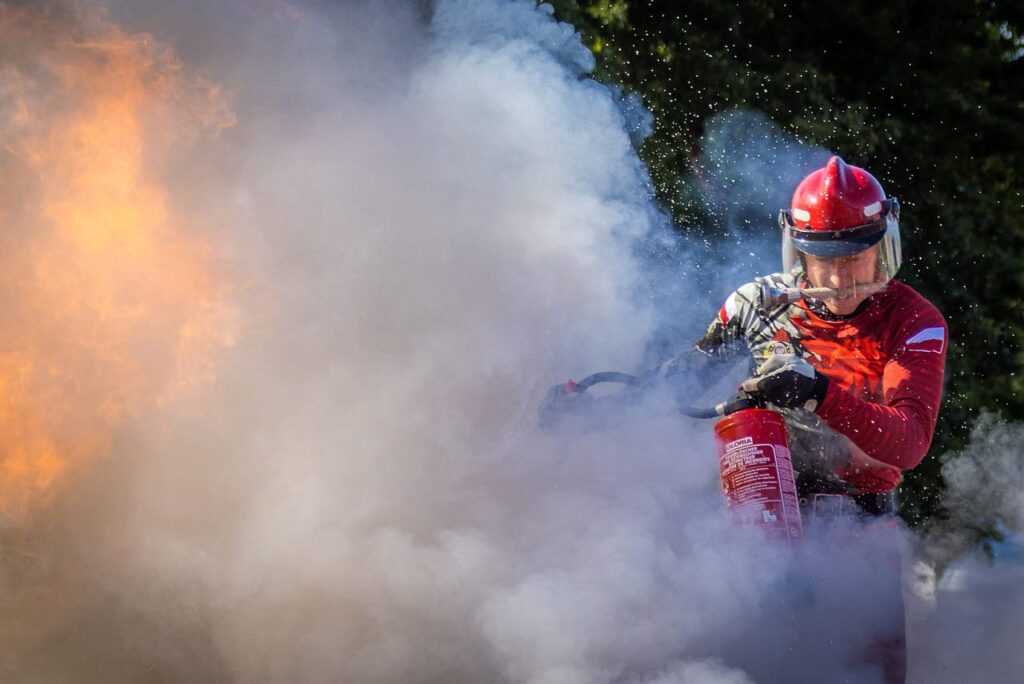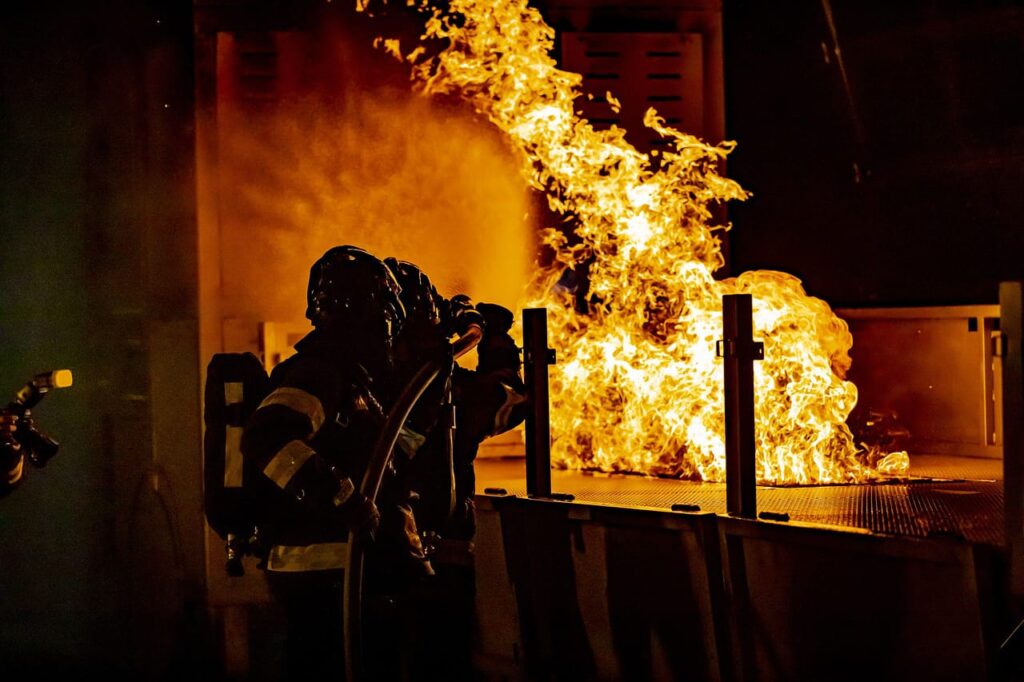Fire Protection and Life Safety Systems
The life safety system is used interchangeably, and the terms fire protection system and these systems create a comprehensive safety net; although they are related, they are not the same. Protecting lives and property, When used together,
Fire Protection Systems
The International Code Council defines fire protection systems as approved devices that detect, extinguish, alarm or control fires. Fire protection encompasses measures and practices to prevent or reduce fire injury and property loss. Passive measures, such as fire-rated walls, inhibit fire spread, and active fire protection systems, like alarms and sprinklers, respond directly to fires. However, these systems can allow time for occupants to evacuate and for firefighting efforts to begin.
Life Safety Systems
Life safety systems, not just fires, include important considerations that protect building occupants from all sorts of emergencies; the term is broader than fire protection or chemical leaks, covering non-fire emergencies like power outages and more specific in its focus on preserving lives.
Defined by the NFPA 101: Life Safety Code, it includes standards addressing fire exits, crowd management, and emergency accessibility. Life safety ensures safe evacuation during cr systems, such as alarms and egress paths, while sting fire protection measures. Life safety systems include devices and equipment that aid in controlling smoke, evacuation, and isolation during systems essential for protecting human life.
Comp during emergencies or critical building system failures, such as a life safety system
in the event of an emergency or fire. The components of life safety systems are intended to shield your building’s students. Safety systems are made up of numerous parts.
Components of a life safety system may include depending on your facilities:
- Fire Sprinklers and Suppression Systems
- Fire Alarm & Detection System
- CCTV Security Cameras
- Access Control Systems
- Alarm & Security Monitoring
- Emergency & Exit Lighting
- Fire Extinguishers
- Mass Notification Systems
How Life Safety Systems Work with Fire Protection & Prevention
Life safety systems, fire protection, and fire prevention work together to ensure comprehensive building safety. Fire prevention involves proactive measures like reducing fire risk, regular inspections, and reinspecting flammable materials. Fire p otection includes active systems like sprinklers and alarms that detect and control fires,, passive sysfires,, and passive systems such as inhibiting fire spread. Life s fety systems, such as emergency lighting and mass notification systems, protect occupants during emergencies by facilitating safe evacuation, controlling smoke, and providing emergency communication.
Life safety systems can be integrated with fire protection and prevention measures. This integration ensures:
Detection and Response: When a fire is detected, detected, alarms alert occupants, and sprinklers activate to control the fire. Simultaneously, exit signs guide occupants to safety and emergency lighting.
Emergency Communication: ensuring everyone knows the safest evacuation routes and actions to take, Mass notification systems deliver instructions and updates,
Compliance and MaiMaintenanceinimizing the risk of failure during an emergency, Regular inspections and MainMaintenance these systems ensure they function correctly and comply with safety regulations,
Buildings can provide a holistic approach to safeguarding occupants. Safety measures ensure both are proactive by combining fire prevention strategies with fire protection systems and life safety measures.
Protect Your Business With Life Safety and Fire Protection Systems
to ensure the safety and well-being of your occupants, Incorporate fire protection and life safety systems into your building. These systems work together to manage emergencies effectively so you can rest assured that you do your part to protect your health and life. Sur schedules regular testing inspections and Compliance with regulations, and servicing these systems is essential to ensure they work correctly. By knowing that the building is well-prepared to handle any emergency, you’ll prevent costly repairs when regularly inspecting and maintaining the systems. By using these safety measures, you can provide peace of mind and safeguard lives and property.
How Do Fire Alarms Work – Brief Overview
If you are looking for a fire warning system, maybe you can ask yourself, “Hotwire alarms wo…” Before we look at that, let’s examine the role of each fire alarm system component and how they are built.
A fire alarm includes the following components:
The Detection Devices: these parts get extreme heat or an unusual amount of smoke in the room in the room.
The Audio Devices: This is the device in the building that makes the alarm noise so people can be notified about the potential presence of fire.
The Visual Device: In areas with a high ambient noise level, this is either a beacon or a strobe.
The Fire Alarm Control Panel: If any detectors are activated, it will identify the location either by zone or exact location, depending on the system. tIt’sIt’sntIt’sIt’sind the system, monitoring all devices to ensure everything is okay.
Additional Equipment: Interface units to turn off gas supply or open roof vents, etc., or call Points for raising the alarm.
Smoke Detectors
The smoke detectors can be either ionization or optical. Ro infrared light sen and opticalical smoke detectors “see” “the “smoke. Gh ts scattered, and Smoke particles enter the sensor, Which triggers the alarm. Ni motion detectors have a different working principle: thus triggering the alarm, smoke particles reduce the air ionization,
Heat Detectors
Heat detectors monitor environmental temperature. Eyriggerthe alarm in case of a highly abrupt rise. Ns sensors and sensors will have a pre-set maximum temperature, which is allowed. Is t hold, regardless of any other parameter, i s exceeded once in the r, causing the alarm. m Control Panel
it’s to understand how fire alarms work, Now that you know what what’s, it sends a signal to the fire alarm control panel, making that part of the system start its job and raise the alarm; each time the smoke or heat sensor detects an abnormally high level of smoke or temperature, The sounder alerts humans in the building, so they can call the fire brigade and others towards the emergency fire exit and direct themselves.
Noknowledgewledgknowledgeeu wants to know how fire alarms work if you want to install one in your building; nonetheless, you should be aware that there are multiple types of alarm systems, which could provide details about what you’d probably contact a specialist. For instance, modern fire alarms may have an automatic dial-out function that, in case thee calls the emergency service alarm goes off out of hou, calls the e the function. It must be maintained sufficiently, as false call-outs to the firservicerarehe expense. See TheThetemcor t d d can it potentially list themm fromnaturally all fir?.


